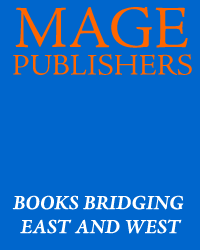 Amoo Sam beh madreseh miravad Amoo Sam beh madreseh miravad
Defense Language Institute program as an indicator
of U.S. foreign policy
J.A. Morrow
December 7, 2004
iranian.com
While there are many ways of gauging the direction
of a nation's foreign policy, language study is an area that is
often overlooked
but which can be particularly revealing. Take, for example, the
recent ads that appeared in the Chronicle of Higher Education advertising
positions for instructors of Modern Standard Arabic, Chinese, Persian,
French, Dari, Korean, and Serbian / Croatian.
Such ads would not
draw much attention were they coming from most public or private
universities. However, in this case, they were placed by the
Defense Language Institute in Monterrey, California, which specializes
in teaching languages to students from the four military services.
The
Defense Language Institute employs over 1,000 full-time instructors
on a year-round schedule to teach 3,000 students. That's a student-faculty
ratio of 3:1! Classes are limited to a maximum of 10 students who
attend classes six to seven hours a day. Faculty members work in
teams and each team teaches the same students throughout their
course, which varies in length by language from 25 to 63 weeks,
with the shorter courses covering European language like French
and the longer courses covering complex languages like Modern
Standard Arabic.
During a 63 week course in Arabic, which is
just over one
year, students have over 2000 contact hours. In a regular academic
program, students studying Arabic complete 120 contact hours
per year for four years for a total of 480 contact hours.
If regular
university students take one Arabic class per summer, they
can complete the 480 hours within 2 years. However, unlike French
and Spanish --languages where students can attain fluency
in
three
to four years -- Modern Standard Arabic is a language like
no other that can easily take eight years to master and it does
not stop
there.
 Students can easily spend their entire lives studying the
complexities of that wondrous Semitic language. With the intensive
Arabic language program at the Defense Language Institute students
can learn the Arabic language in a little over one year as opposed
to the decade it would take under normal circumstances. Students can easily spend their entire lives studying the
complexities of that wondrous Semitic language. With the intensive
Arabic language program at the Defense Language Institute students
can learn the Arabic language in a little over one year as opposed
to the decade it would take under normal circumstances.
The language
specialists from the American military receive far more exposure
to the language than students who follow the regular route.
Whether they are better prepared to handle themselves with a higher
degree
of fluency is difficult to discern as the retention rate tends
to be poor when learning a language so rapidly. Nonetheless,
in terms of intensity, there is no other language program that
offers
courses that are even remotely similar to those offered by
the Defense Language Institute.
The American military's focus on the Arabic language is tied
to its interests in Iraq and the U.S. government's goal of "redrawing
the borders of the Middle East." The interest in Chinese is
linked to the contentious issue of Taiwan. The interest in French
focuses mainly on black Africa where French is the lingua franca
and where American forces may soon become more involved.
The interest
in Dari, the Afghan dialect of Persian demonstrates a continued
commitment to military efforts in Afghanistan. The focus on Dari,
as opposed to Pashto, the other official language, is logical
it serves as the means of communication between speakers of different
languages in Afghanistan. The interest in Korean focuses on North
Korea which continues to be a thorn in the sides of Uncle Sam.
 The U.S. is waiting impatiently for the death of the North Korean
despot or the internal collapse of his totalitarian regime since
the only other way to defeat to Maoist dictator would be through
a blitzkrieg. The interest in Serbo-Croatian, which is really
a politically contrived name for Bosnian, is linked to American
military
activities in the former Yugoslavia. The U.S. is waiting impatiently for the death of the North Korean
despot or the internal collapse of his totalitarian regime since
the only other way to defeat to Maoist dictator would be through
a blitzkrieg. The interest in Serbo-Croatian, which is really
a politically contrived name for Bosnian, is linked to American
military
activities in the former Yugoslavia.
Most interesting of all,
however, is the interest in the Persian language, perhaps the
result of
auspicious signs coming from the inside of Iran.
About
J.A. Morrow, Ph.D., is Assistant Professor of Modern Languages
at the Department of Modern Languages, Northern State University,
Aberdeen, South Dakota.
*
*
|